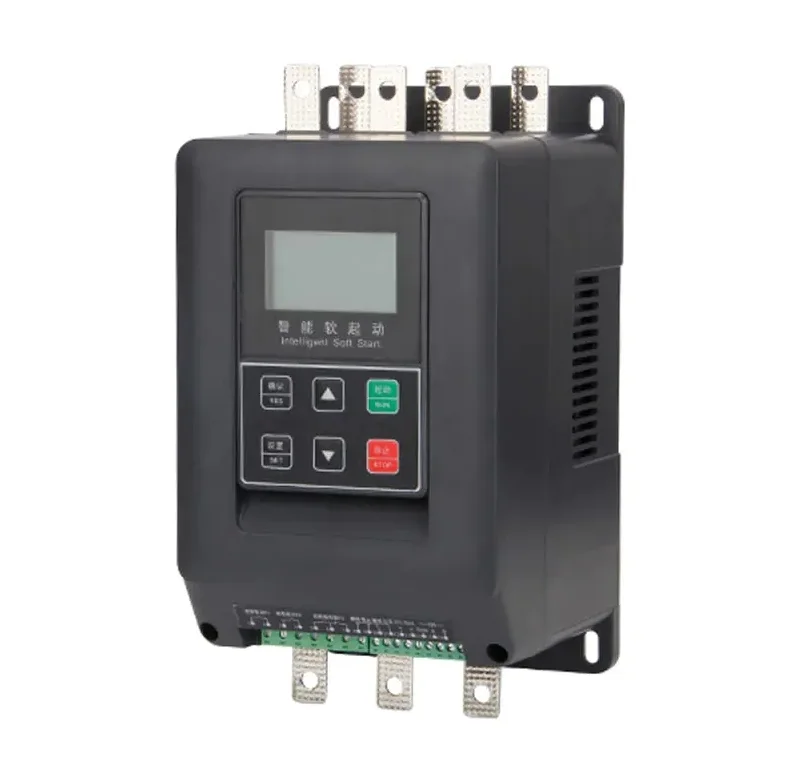Selecting the appropriate method to start an electric motor involves balancing performance needs, cost, and complexity. The motor soft starter offers a distinct approach compared to traditional methods like Direct-On-Line (DOL) or Star-Delta starters, and differs significantly from Variable Frequency Drives (VFDs).
The simplest and most economical method is Direct-On-Line (DOL) starting. It applies full line voltage immediately to the motor. While cost-effective and robust, it results in the highest inrush current and starting torque, causing significant electrical stress on the supply and mechanical shock to the driven equipment. DOL is generally suitable only for smaller motors or loads where high starting torque and shock are acceptable.
Star-Delta starting is a common alternative for larger motors. It initially connects the motor windings in a star configuration (reducing voltage per winding to 58%), lowering starting current and torque. After a preset time, it switches to delta for full voltage and torque. While it reduces inrush current compared to DOL, the transition from star to delta causes a significant torque jump and current surge, which can still be mechanically stressful. It also requires more complex contactors and wiring.
The motor soft starter addresses the limitations of DOL and Star-Delta by providing a continuously controlled acceleration. It gradually increases voltage and torque from a programmable initial level to full voltage over an adjustable ramp time. This results in smooth acceleration with significantly reduced inrush current and minimal mechanical shock throughout the entire start cycle. It offers superior control and protection compared to the previous methods, with features like soft stopping and integrated motor protection. It requires more complex electronics than DOL or Star-Delta but is often simpler and less expensive than a VFD.
Variable Frequency Drives (VFDs) provide the most comprehensive control. They vary both the voltage and frequency supplied to the motor, enabling full speed control from zero to above base speed. VFDs offer excellent starting characteristics (similar or better than a soft starter) and significant energy savings for centrifugal loads (pumps, fans) by allowing speed reduction. However, they are typically the most expensive option and introduce greater complexity, potential for harmonics, and sometimes require additional filters.
Choosing the right solution depends on the application:
DOL: Small motors, simple loads, low cost priority.
Star-Delta: Larger motors where some current reduction is needed, budget is constrained, and torque transition shock is acceptable.
Motor Soft Starter: Applications needing smooth acceleration/deceleration, reduced mechanical stress and inrush current, without requiring speed control (e.g., conveyors, mixers, crushers, compressors, large pumps/fans running at fixed speed).
VFD: Applications needing variable speed control, maximum energy savings on centrifugal loads, or the very smoothest starting/stopping profiles.
The motor soft starter occupies a valuable niche, providing enhanced control and protection over traditional starters for fixed-speed applications, often at a more accessible point than a full VFD solution.







